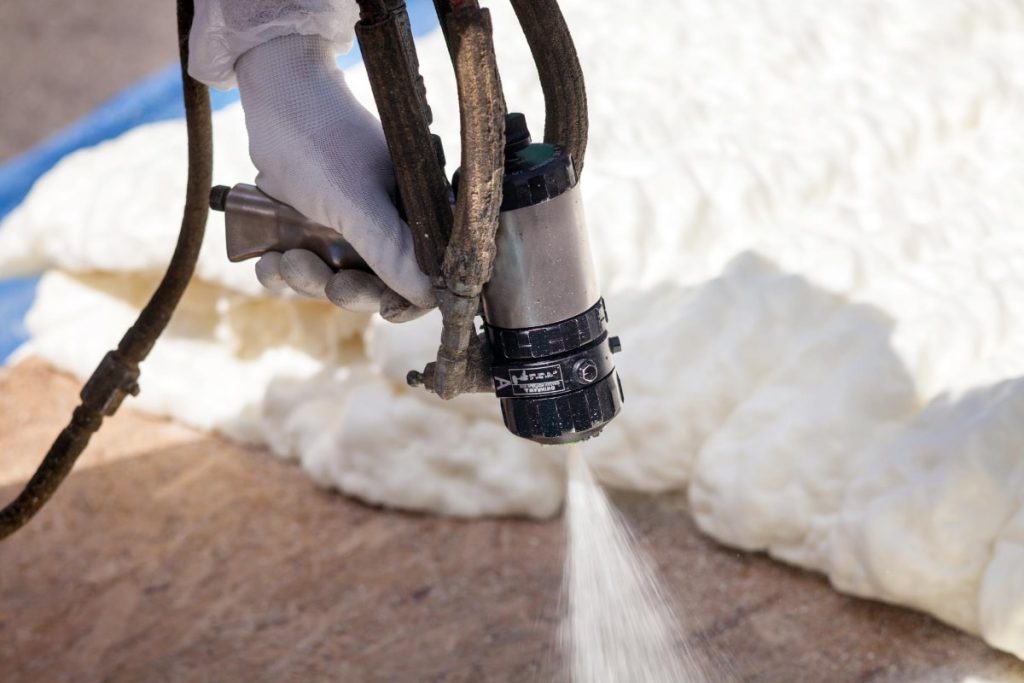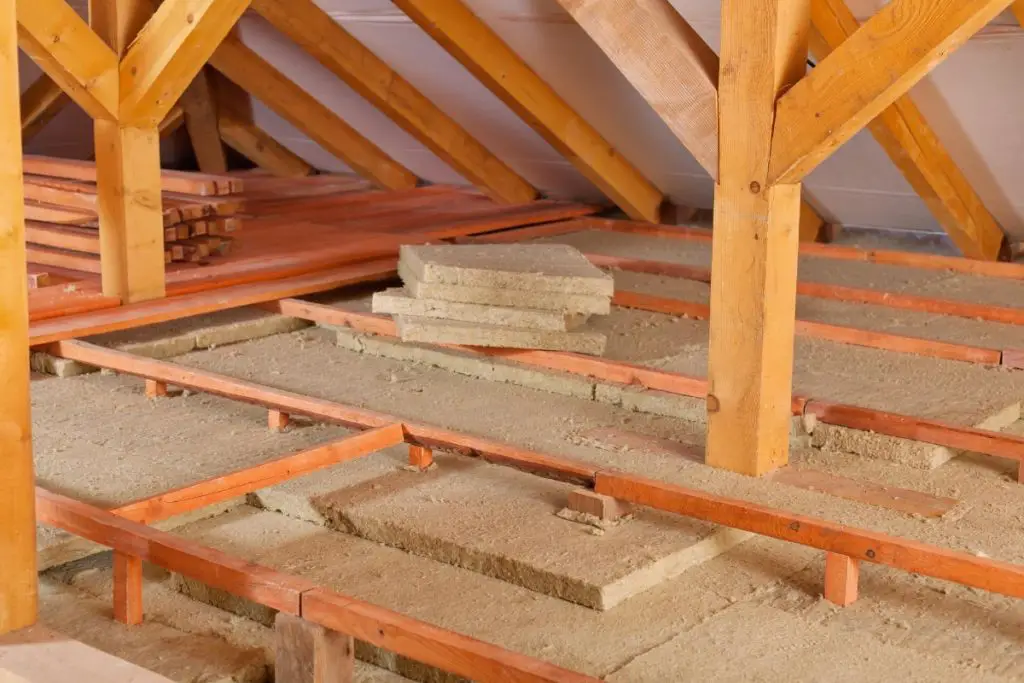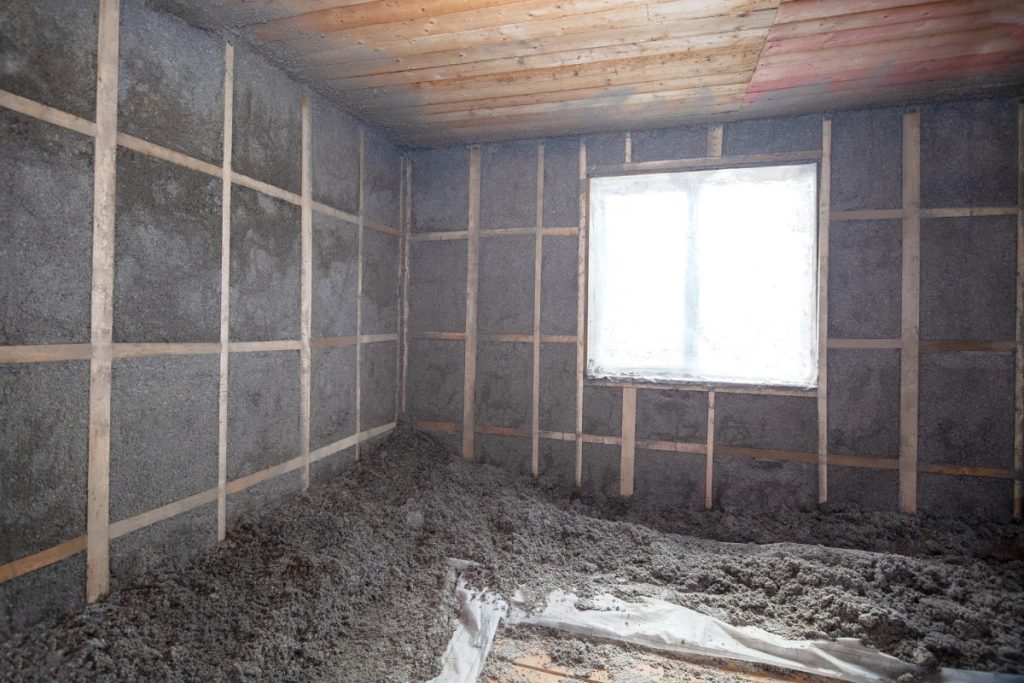Are you looking for ways to insulate your home and save on energy costs? If so, you’re in luck! There are many technological advances that can help you do just that. In this blog post, we will discuss three of the most popular methods for insulating your home, including their types, pluses, and downsides.
We will also provide tips on how to choose the right insulation for your needs. So whether you’re looking to install new insulation or simply want to learn more about the options available, this blog post is for you!
Tech #1. Spray Foam Insulation
The first option we will discuss with regards to insulating your home is spray foam insulation. Spray foam insulation is a popular choice for many homeowners because it is easy to install and highly effective.
This type of insulation can be sprayed into any cracks or openings in your home, making it an ideal choice for homes with difficult-to-reach areas. Additionally, spray foam insulation expands to fill the space it is sprayed into, creating a tight seal that helps to prevent drafts and heat loss.

What are the upside impacts of spray foam insulation?
- Spray foam insulation provides an effective barrier against drafts, moisture, and pests.
- It is an excellent insulator, helping to keep your home or office at a comfortable temperature year-round.
- Spray foam insulation can help reduce your energy bills by keeping the heat in during the winter and cool air in during the summer.
- It is also environmentally friendly, made from recycled materials and requires no energy to produce.
- Spray foam insulation is quick and easy to install, and can be used in a variety of applications.
- It is also one of the most durable insulation materials available, lasting for decades with proper care.
What are the downside impacts of spray foam insulation?
- The initial cost of spray foam insulation can be higher than other types of insulation.
- It is not suitable for all applications, such as in areas that are constantly wet or exposed to high temperatures.
- If not installed properly, spray foam insulation can cause health problems due to the release of chemicals into the air.
- It is also flammable, and should not be used near heat sources or in areas where there is a risk of fire.
- Spray foam insulation can be difficult to remove once it has been installed, making it a permanent solution for most applications.
What are the types of spray foam insulation?
There are two main types of spray foam insulation: closed-cell and open-cell. Closed-cell spray foam is the most common type used in home and office applications. It is made up of tiny cells that are filled with a gas, typically either nitrogen or carbon dioxide. These cells are then sealed, resulting in a highly effective component for insulating your home.
Closed-cell spray foam has a higher R-value than open-cell spray foam, meaning it is better at insulating against heat and cold. It is also more resistant to water and moisture, making it an ideal choice for bathrooms, kitchens, and other wet areas.
Open-cell spray foam consists of cells that are only partially filled with gas. These cells are not sealed, which makes the insulation less effective but also allows it to be more easily installed. Open-cell spray foam is typically used in commercial applications where a high R-value is not required.

Tech #2. Fiberglass Insulation
Another option for insulating your home is fiberglass insulation. Fiberglass insulation is made from recycled glass and is available in both rolls and batts. This type of insulation is easy to install and can be cut to fit any space. Fiberglass insulation is also effective at blocking out noise and preventing drafts.
What are the upside impacts of fiberglass insulation?
Fiberglass insulation has many advantages over other types of insulation. It is made from recycled glass, so it is an environmentally friendly option. Fiberglass insulation is also non-flammable and does not off-gas, so it is a safer choice for your home. Fiberglass insulation is also resistant to mold and mildew growth, so it is a good choice for homes in humid climates. Finally, fiberglass insulation is easy to install and can be used in a variety of applications.
What are the downside impacts of fiberglass insulation?
Fiberglass insulation has a few disadvantages. First, it can irritate the skin and eyes, so it is important to wear gloves and goggles when working with it. Second, fiberglass insulation can settle over time, so it is important to check it periodically to make sure that it is still effective. Finally, fiberglass insulation is not as effective as other types of insulation in very cold climates.
What are the kinds of fiberglass insulation?
There are two main types of fiberglass insulation: rolled and batt. Rolled fiberglass insulation is the most common type used in home applications. It is available in a variety of widths and thicknesses, so it can be cut to fit any space. Batt fiberglass insulation is pre-cut to standard sizes, making it quick and easy to install. It is typically used in commercial applications.

Tech #3. Cellulose Insulation
The final option we will discuss is cellulose insulation. Cellulose insulation is made from recycled paper products and is available in both loose-fill and batts. This type of insulation is easy to install and can be cut to fit any space. Cellulose insulation is also effective at blocking out noise and preventing drafts.
What are the upside impacts of cellulose insulation?
Cellulose insulation is made from recycled paper products and is one of the most eco-friendly insulation options available. It’s also one of the most effective insulators, providing an R-value of 3.8 to 4.3 per inch. Cellulose insulation is also fire resistant and does not off-gas harmful chemicals like some other insulation materials, making it a very effective technology for insulating your home.
What are the downside impacts of cellulose insulation?
Cellulose insulation does have some disadvantages. It can be difficult to install, and it is not recommended for areas that are prone to moisture or flooding. Cellulose insulation also settles over time, so it needs to be replenished periodically to maintain its effectiveness.
What are the types of cellulose insulation?
There are two types of cellulose insulation: loose-fill and batts. Loose-fill cellulose insulation is made from recycled paper products that have been shredded or pulped. This type of insulation is easy to install and can be cut to fit any space. Batts cellulose insulation is made from recycled paper products that have been compressed into strips. This type of insulation is also easy to install and can be cut to fit any space.
Tips on Choosing the Perfect Type of Insulation Technological Advances for You!
There are a few things to consider when choosing the perfect type of technological system for insulating your home.
- First, you need to determine what R-value you need. The R-value is a measure of an insulator’s ability to resist heat flow. The higher the R-value, the better the insulator.
- Second, you need to decide what type of insulation you want. Here, there are three main types of insulation: fiberglass, cellulose, and spray foam. Each has its own advantages and disadvantages.
- Finally, you need to decide where you want to insulate. Some areas of your home, such as the attic or crawl space, may be more difficult to insulate than others.
If you’re not sure which type of technological advancement is suitable for insulating your home, we recommend talking to a professional. A qualified contractor like iFoam can help you choose the best insulation for your home, install it properly, and maintain its top shape. With the right insulation in place, you can keep your home comfortable year-round and save money on your energy bills. What are you waiting for? Make your living space more comfortable today!